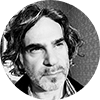It has been said numerous times that nature abhors a vacuum, or at the very least, stagnant air. Therefore, it should not come as a surprise that we are approaching the shelf life of key opinion leaders (KOLs) in their present incarnation. When I started in this business, KOLs were our faculty, those go-to guys and gals who spoke on our behalf at congresses, dinner meetings, and other events where healthcare professionals gathered to hear new things. For the most part, you could always separate KOLs into two types: engaged and not so engaged. Engaged KOLs were often more invested in a compound; being investigators during clinical trials and having a front seat watching a drug go from bench to bedside. The not so engaged KOLs were a small group that was not really invested in what we were doing and just enjoyed speaking or cashing the occasional honorarium check. But times are changing. Regulations are getting tighter, and with ever-shrinking budgets and access to unmolded clinical minds, the ways we once identified, trained, and put KOLs to work have to evolve.
The first place to begin is for us to lose the “O.” I was once told that opinions are like…noses; everybody has one. A doctor can have the opinion that a particular drug is better for his/her patients than another, and that is fine. But the real cache to an opinion is this: will what one person believes influence what others do? Now, that is the real trick. It is becoming increasingly clear to many that people with opinions can come and go, but influencers have staying power. Even the most powerful message loses steam after it is heard for the 10th time from the same speaker.
So how do we accomplish this transformation? Believe me, it could be more painful than one might first think because it will take something that is often too scary to mention in the halls of pharma: CHANGE!
It is time we begin to re-evaluate whom we choose to speak on behalf of a company or a specific drug. For years, the same small group of faculty has spoken at meetings, authored papers, and delivered symposia. To be brutally honest, this model no longer works for two reasons: (1) Many people are tired of hearing the same old messages coming from the same mouths, and (2) They are not just speaking on our behalf; they are speaking for our competitors as well. Thus, it is not surprising to see how this severely hurts a speaker’s credibility as a key opinion leader.
So how do we develop influencers, and more importantly, how do we keep from making the same mistakes over time? That we save for part 2.
RELATED TOPICS

Ken is a great deal more than just the president of a medical communications company. He is something of a hybrid. He’s part marketing manager, part creative director, and part copywriter. To the chagrin of his peers—but to the delight of his clients—Ken is a consummate perfectionist. As a former creative director for a high-end consumer agency, he challenged his creative teams to go beyond the mundane to produce work with real creative impact, something he’s just as fervent about today. From producing and directing TV commercials, to launching DTC and Rx-to-OTC switches, Ken brings his clients a world of experience in OTC pharmaceuticals as well as business, lifestyle, and high-end consumer products and services. Whether huddled with clients behind a mirror in a market research center in Houston, facilitating a strategic workshop in Madrid, or developing a global campaign either in the New Jersey or California office, Ken is always fully engaged, bringing “bestness” to all areas of his hectic but full life.
